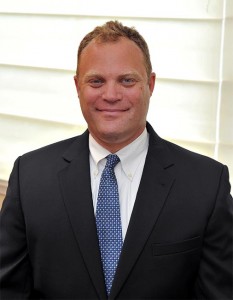Progressive Voice is a weekly opinion column. The views and opinions expressed in this column are those of the individual author and do not necessarily reflect the views of ARLnow.com.
 (Updated at 2:50 p.m.) The week of Nov. 17 was a busy one in Arlington.
(Updated at 2:50 p.m.) The week of Nov. 17 was a busy one in Arlington.
On Monday, the County Board voted to cancel further work on the Arlington/Fairfax streetcar project after more than a decade of community planning and involvement. This decision, like the streetcar itself, has proven to be controversial — for some in terms of outcome and for others in terms of process. Both streetcar supporters and advocates for alternatives saw reasons to be disappointed.
Most people, whatever their streetcar views, were caught by surprise. Many wondered about a clear path forward to address congestion on Columbia Pike and grow our commercial tax base to support services that remain a reason so many people find Arlington an attractive place to live. The element of surprise suggests we still need to be aware of ways in which county leaders and Arlington residents can be better connected.
The evening after the streetcar announcement, over 100 Arlington residents from four Civic Associations gathered for nearly two hours at the Langston Brown Community Center to discuss their views on the future of Lee Highway. In my four years as Yorktown Civic Association President attending many meetings, this was one of the most positive representations of civic engagement I’ve seen.
How to reconcile these events? The streetcar announcement suggests a major change in direction for our county. The community meeting indicates that the “Arlington Way” — shorthand for deliberative community involvement and inclusion — is alive and well. Having talked with many leaders of all types and vantage points across the county, I hear from many that the process is broken and from many others that the process is alive and well. My conclusion is that we have entered a new era that will take time to sift through.
I believe that Arlington is alive and well. Our schools are strong, our economy is still bolstered by proximity to Washington and forethought of Arlington’s leaders in previous generations. We have an active and engaged citizenry. Yet, something has changed and we are at a pivot point.
Schools consume half of the county’s budget, yet too many residents question whether we have the efficiency, transparency and consistency we should expect from a $500 million entity.
Our commercial sector has historically high vacancy rates and faces competitive pressures not seen recently. With the downsizing of the federal government and competition from Tysons, Reston, Alexandria and other locations, Arlington is facing questions about how we can better attract businesses and make sure they stay in Arlington once they are here.
This is important because nearly 50 percent of real estate property taxes are commercial and nearly 60 percent of the county’s operating budgets come from real estate taxes.
These challenges come when there are questions about how different communities and “regions” of Arlington relate to one another and there are significantly different perceptions about what our county needs or should look like — even though we need greater county unity to meet the challenges we face.
How best to succeed in such an environment? I have recently been reading a book titled “Citizenville” by California Lt. Gov. (and former San Francisco Mayor) Gavin Newsom. Newsom addresses how governments can better connect with residents through innovation and technology. Newsome would likely applaud how much Arlington has done right — embracing and using technology and innovation in ways that most communities would envy and be wise to emulate.
But, to what end? As Newsom writes, “We’ve got to simplify, pull back all these layers of supposed complexity, and get down to the essentials.” I take this to mean that a process must be viewed by residents as working for them. And a process isn’t working if too many voters say it is not. Perhaps Newsome anticipates this in writing that “the world is changing too quickly for government to respond with tiny, incremental changes.”
Many who care about our community want Arlington to continue to provide leadership and innovation in blending the best of urban planning while maintaining a strong sense of place and community. To that end, we all need to look deeper than singular policies, programs, Pikes or Highways.
We should acknowledge that there are fundamental questions being asked that have to be answered. And the reality is that these questions are going to be answered by more people, with more voices and more opinions, in messier ways, than they have been in the past. I, for one, am looking forward to the conversation.
Andrew Schneider is a lifelong Arlingtonian who works for the College of William & Mary in the D.C. area. He is the President of the Yorktown Civic Association, a member of the Arlington Transportation Commission and the George Mason Arlington Campus Advisory Board and serves as Vice Chairman of Community Residences. Recently, he was named as an inaugural member of Leadership Arlington’s 40 under 40.

